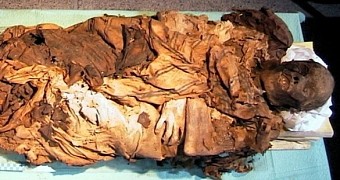In July 1329, a warlord by the name of Cangrande della Scala pretty much dropped dead out of the blue. Thus, just days after making a triumphant entrance into the city of Treviso in Italy, which he had taken control of merely a few months back, he started feeling ill and soon enough passed away.
Just to put things into perspective, it need be said that the Renaissance-era warlord made his entrance into the city of Treviso on July 18. Come July 22, Candrange della Scala was dead. What he assumed was a stomach illness killed him before he even had a chance to figure out what was happening.
The thing is that, according to a team of forensic scientists in Italy, it wasn't really a stomach illness that brought about this Renaissance-era warlord's demise. On the contrary, a new paper in the Journal of Archaeological Science says that 38-year-old Candrange della Scala got sick and died shortly after because he had been poisoned.
What historical sources tell us about the warlord's demise
The researchers who claim to have solved this centuries-old forensic case explain that, according to historical records, the symptoms that Cangrande della Scala displayed when he got sick included vomiting, fever and diarrhea. Hence, it was believed that he was suffering from a stomach condition.
The scientists go on to detail that the doctors who attempted to cure the warlord of the stomach illness that was troubling him were quite convinced that Cangrande della Scala became sick after drinking some water from a polluted spring he chanced to come across during a military campaign.
As explained in the Abstract to the paper in the Journal of Archaeological Science, “the sudden death was preceded by vomit and diarrhea with fever that, according to written documents, he had contracted a few days before by drinking from a polluted spring.”
What the forensic scientists found during their investigation
Specialist Gino Fornaciari with the University of Pisa in Italy and fellow researchers explain that, having exhumed the Renaissance-era warlord's body from its tomb in the church of Santa Maria Antiqua in Verona, they got to work examining it and found clear signs of poisoning.
More precisely, the researchers claim to have found traces of a deadly heart-stopping plant known as Digitalis or foxglove in Cangrande della Scala's digestive tract. Besides, they say that the symptoms displayed by the warlord prior to his untimely death are consistent with Digitalis poisoning.
“Both palynological and toxicological data suggest an intoxication through the oral administration of an infusion or decoction of leaves and flowers of Digitalis,” University of Pisa researcher Gino Fornaciari and his colleagues write in the Journal of Archaeological Science.
All things considered, chances are that the warlord did not ingest the poisonous plant by mistake. On the contrary, the most likely explanation for his death is that somebody purposely administered him Digitalis. The thing is that, at least for the time being, the forensic scientists are pretty much clueless about who it was that killed Cangrande della Scala by poisoning him.

 14 DAY TRIAL //
14 DAY TRIAL // 

